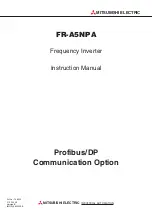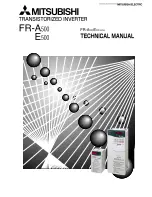
8 - CanOpen / EtherCAT
50 / 66
•
Supported homing methods object (60E3h): the supported homing methods are described in the
previous section and in the servodrive manual.
8.4.7
Touch probe
This functionality is not implemented.
8.4.8
Interpolated mode (optional)
This profile allows operation with a numerical control; target buffering on the device side is NOT
implemented: one value needs to be sent by the master to the device for each sync period and the device
will generate a ramp that will drive the motor to that position on the end of the NEXT sync period; the next
figure illustrate how the data exchange works.
SYNC
time
K-1
SYNC
time
K
SYNC
time
K+1
SYNC
time
K+2
MASTER
SLAVE
Send PdoRx
Setpoint(K+1)
PdoTx
Measure(K-1)
Slave trajectory: Setpoint(K-1)
Setpoint(K)
Slave trajectory
reaches Setpoint(K)
Send PdoRx
Setpoint(K+2)
Send PdoRx
Setpoint(K+3)
PdoTx
Measure(K)
PdoTx
Measure(K+1)
Slave trajectory: Setpoint(K)
Setpoint(K+1)
Slave trajectory: Setpoint(K+1)
Setpoint(K+2)
Compute:
Setpoint(K+1)
PosError(K-2)
NC
Compute
Setpoint (K+2)
PosError(K-1)
Compute
Setpoint (K+3)
PosError(K)
Comunication deadline
Measure(K-1) to master
Comunication deadline
Setpoint(K+1) to slave
NC
NC
Slave reaches
Setpoint(K+2)
Figure 19
Is worth noting that interpolated position mode inserts a delay of two sync periods from the master point of
view: for example at time K, the numeric control will compute the position error of the previous sync period
(K-1) and will compute the target that the slave will reach at time (K+2).
Implemented features details:
•
interpolation submode selection (60C0h, type 0), only default linear interpolation can be selected
•
allowed interpolation period range is 1.0ms ... 100.0ms
Optional features
aren’
t implemented:
•
position range objects not implemented (607Bh)
•
interpolation data configuration (60C4h) is not implemented since there is NO interpolation data
buffer on the device; one target must be transferred from master on each synchronization period
•
profile par
ameters don’
t influence trajectory generation; the master is responsible of limiting
speed/acceleration/deceleration in this mode
8.4.9
Cyclic synchronous position mode (optional)
The cyclic synchronous position mode allows interpolation in a similar way of the interpolated mode; this
mode allows the master to manage more precisely the reference generation inside the servodrive. The
following scheme is employed:
















































